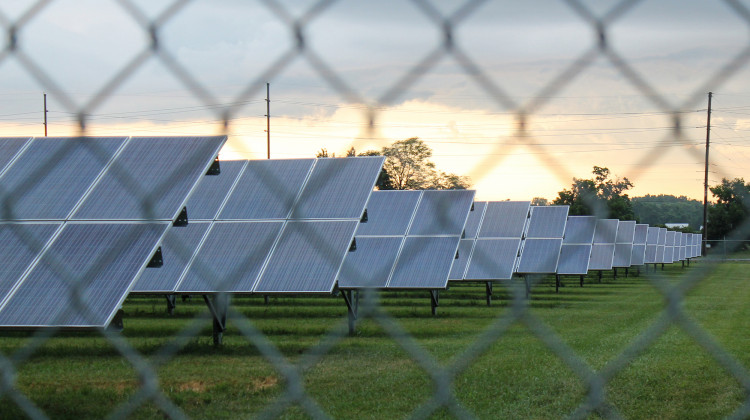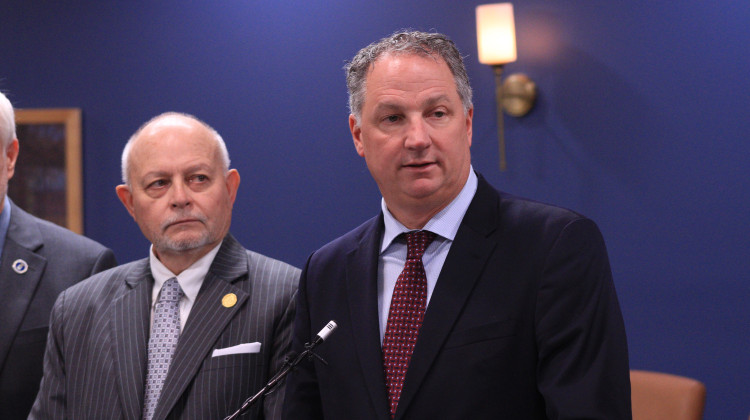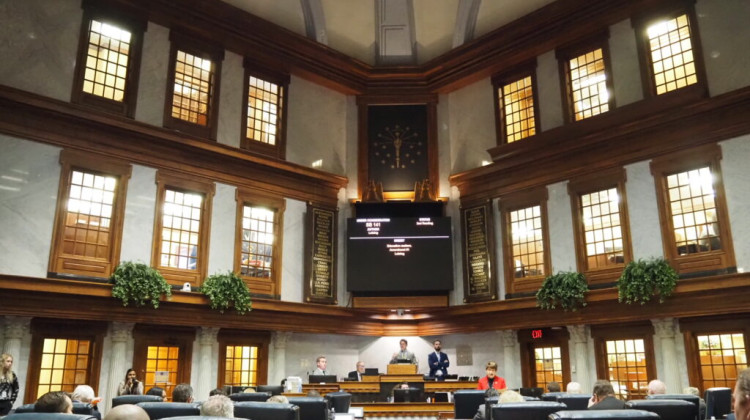
Indiana is expected to see the third highest increase in megawatts of large-scale solar in the country — with nearly four gigawatts, or 4,000 megawatts, proposed.
Lauren Chapman/IPB NewsBig solar projects in Indiana this year have already doubled the state’s solar capacity. A new report from the Solar Energy Industries Association said the state now has enough solar to power more than 111,000 homes.
Indiana is also expected to see the third highest increase in megawatts of large-scale solar in the country — with nearly four gigawatts, or 4,000 megawatts, proposed. But that all depends on if those planned projects get finished.
Joseph Rand is the senior scientific engineering associate at Lawrence Berkeley National Laboratory, which conducts energy research for the federal government. The lab recently issued a report looking into proposed energy projects around the country.
Rand said that proposed growth in Indiana is likely due to some utilities’ renewable energy goals.
“Because these major utilities are committed to procuring clean or renewable electricity by a certain year, we're seeing a lot of developers propose new projects to meet those targets," he said.
Rand said solar could also be experiencing more growth in Indiana because restrictive county ordinances have stifled wind energy in the state.
But just because there are several large projects planned for Indiana, that doesn’t mean they’ll get built. A report from the Lawrence Berkeley National Laboratory said historically only about 16 percent of solar energy projects get completed.
One of those large solar projects in the queue is the Mammoth Project in Pulaski County. It's expected to generate up to a gigawatt of energy and could create about $2 million in tax revenue for a county that hasn’t had many property tax increases in the past decade.
There’s also been opposition from some residents who, among other things, said the project will take up thousands of acres of good farmland.
Nathan Origer is the executive director of the Pulaski County Community Development Commission. He said the project has the opportunity to put the county on solid financial ground.
“Are we going to survive if we don't see this revenue, if we don't get the capital investment? Yes. Is it in the community’s best interest if we don't? Absolutely not," he said.
Though residents with Pulaski County Against Solar have filed a legal challenge against the county, Origer said he remains confident the project will move forward.
Rand said there's an incredible economic opportunity for Indiana to become a leader in renewable energy.
"Policymakers, planners in the state, and even just local residents, farmers, citizens need to start thinking proactively about how to both enable the development of a sustainable solar industry in the state of Indiana, but also make sure that that is done appropriately and with minimal environmental and social impacts," he said.
One example would be locating large solar farms on brownfield sites — like where former coal mines and coal plants once stood.
Contact reporter Rebecca at rthiele@iu.edu or follow her on Twitter at @beckythiele.
Indiana Environmental reporting is supported by the Environmental Resilience Institute, an Indiana University Grand Challenge project developing Indiana-specific projections and informed responses to problems of environmental change.
 DONATE
DONATE






 Support WFYI. We can't do it without you.
Support WFYI. We can't do it without you.